Lab works to make the experience worth the visit
Greater spaces, better places
By Beth Bohn
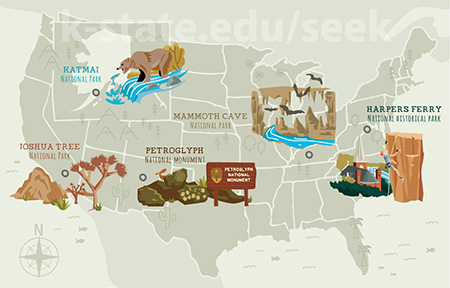
This map shows many U.S. locations where the Applied Park Science Lab conducts research. Learn more about current research projects across the U.S.
The long, dusty road snakes through a windswept prairie where cattle graze and wheat and corn grow. It’s a familiar sight in western Kansas until the road ends and the earth opens, revealing the effects of more than 80 million years of wind and erosion on land that was once a seabed. Sedimentary outcroppings, some towering more than 100 feet, stretch for a mile, resembling ruins from an ancient walled city such as Jerusalem.
As Dorothy once said, “Toto, I’ve a feeling we’re not in Kansas anymore.”
But you are. Welcome to Little Jerusalem Badlands State Park in Logan County, the newest state park in Kansas and a place where the Kansas State University Applied Park Science Lab is helping visitors enjoy the state’s largest Cretaceous-age Niobrara chalk formation while conserving the natural wonder.
The lab is a part of the park management and conservation program offered by the horticulture and natural resources department in the College of Agriculture. It is involved in various funded projects to enhance the visitor experience at parks and other protected areas while conserving their natural and cultural resources.
This work, often involving the latest technology and techniques, takes place in Kansas and across the U.S. at state and national parks and forests, wildlife refuges, historical and cultural sites and other protected places.
“Most of the work we do is trying to understand that balance between visitor use, which is usually mandated in most of these protected areas, with conservation,” said Ryan Sharp, associate professor of park management and conservation and lab director. “The more people we have in a place, the more impacts there will be, whether ecological or social.”
Ancient land, new experience
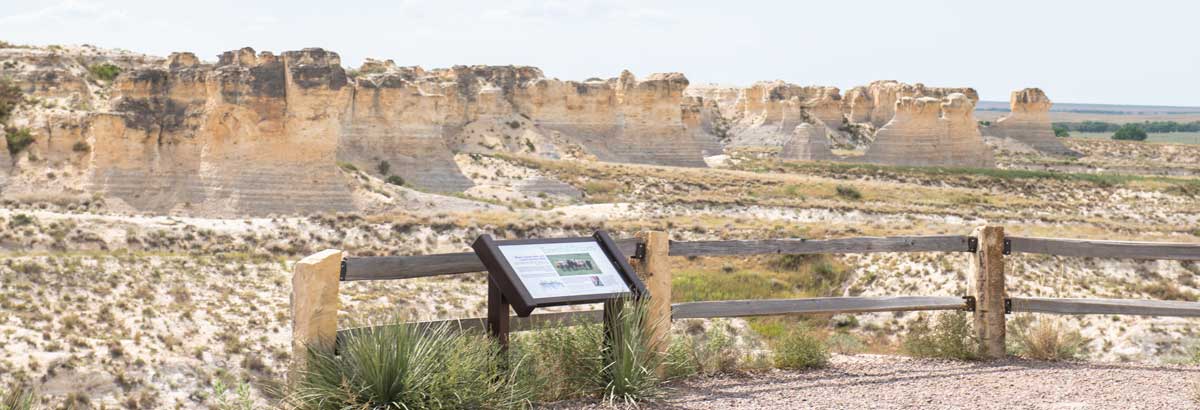
At Little Jerusalem, the lab is conducting a long-term monitoring project on the effects of recreational use on the park. The Nature Conservancy owns the park and funds the project. The park is managed by the Kansas Department of Wildlife and Parks.
The lab started working at Little Jerusalem before the park opened in October 2019, with Sharp and team members helping plan the park’s layout and trails. Because many park areas — including bluffs with nooks, crannies and crevices, and the towering outcroppings — are not all accessible by foot, the team got permission to use a drone to get baseline data and close-up views. Drone use inside most state and national parks in the U.S. is not allowed without permission.
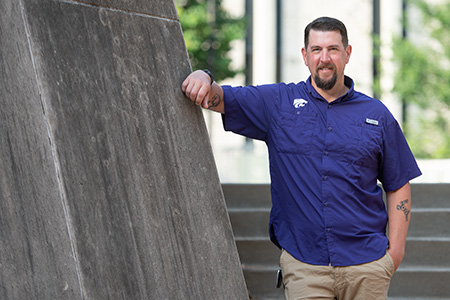
Left: Ryan Sharp, associate professor of park management and conservation, leads the Applied Park Science Lab.
Two years later, Rachel Shively, doctoral student in the lab, is managing the project. She flies a drone over the park — early in the morning when there are fewer visitors — twice a year and checks monthly satellite images to monitor how recreational use is affecting the landscape.
“This way, we can track how trails are getting wider or if vegetation is decreasing as more and more visitors use the area,” Shively said. “Park officials can use this information to determine if they need to make changes to protect the environment.”
So far, so good at Little Jerusalem. Shively said while the trails are widening through use, the vegetation is thriving, which is important. The park is home to the most wild buckwheat in the world, a native plant only found on the chalk bluffs of the Kansas prairie.
Navigating seas of grass
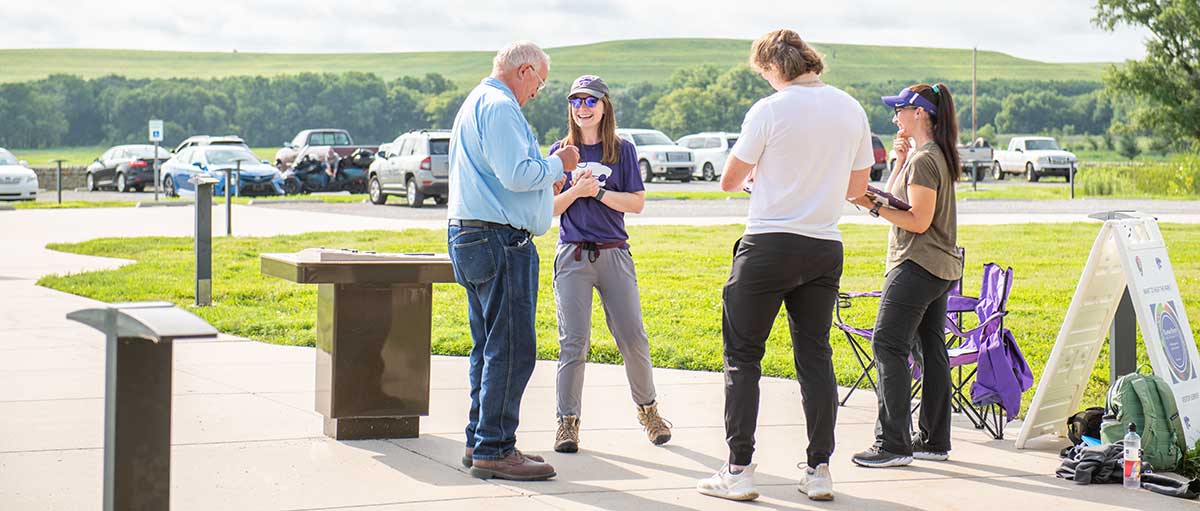
Much of the lab’s work is social science: understanding visitors’ attitudes, values and perceptions and how to reduce conflicts between what a protected area allows and what visitors want to do.
This social science focus is part of two other Kansas projects that Shively manages: the Tallgrass National Prairie Preserve near Strong City in east central Kansas and the Cimarron National Grassland in southwest Kansas.
The lab is conducting a comprehensive visitor use study at Tallgrass. The preserve, owned by The Nature Conservancy, is a part of the National Park Service and showcases some of the last remaining tallgrass prairie in North America. For the first part of the study, GPS devices were given to visitors to track where they went and for how long. Park officials are then able to reconfigure signage to influence where visitors go.
For the second part of the study, Shively, fellow graduate students in the lab and undergraduates are talking to park visitors and handing out cards with a link to an online survey they can complete at their convenience. The survey results help the researchers understand what visitors liked and disliked about the park.
“The survey results help identify if signage is confusing, why people like to visit the preserve and if there’s anything they would like to change about it,” Shively said.
At Cimarron National Grassland, a site managed by the U.S. Forest Service, multiple recreational uses are available, including hiking, biking and fishing, but the site is little used. Through support from the College of Agriculture, the lab is studying the amounts and types of recreational use at the park. Researchers set up human behavior cameras and counters in strategic areas. Information collected will help park managers better protect the site while enhancing the different types of recreation.
“It’s kind of like we’re taking a pulse, really trying to understand what’s going on within those natural spaces,” said Sarah Jackson, doctoral student in the lab. “This way, we can provide informed data to managers and try to help them understand what’s going on in their parks.”
From rural to urban
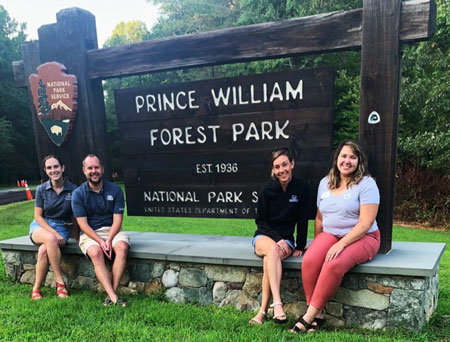
Left: Applied Park Science Lab’s Jessica Fefer, third from left, on-site at Prince William Forest Park in Virginia.
One of the lab’s largest projects is taking place around Washington, D.C. Jessica Fefer, lab co-director and assistant professor, is lead investigator on a National Park Service project. Working with a social scientist from Old Dominion University, Fefer is gathering information about visitors, their motivations and preferences for park experiences, and patterns and trends of park use across Region 1 of the National Capital Area. This region includes the Chesapeake and Ohio Canal National Historical Park, Harpers Ferry National Historical Park, Monocacy National Battlefield, Potomac Heritage National Scenic Trail, Prince William Forest Park, Rock Creek Park and Wolf Trap National Park for the Performing Arts.
The work is challenging because these sites together attract millions of visitors each year and cover lots of area across multiple states. The researchers use cellphone and vehicle GPS location data, available through the independent platform StreetLight InSight, to anonymously track movement on roads and trails. They also are using Public Participation GIS, a survey method that connects with visitors using the parks.
“We use the cellphone and GPS data to estimate vehicular, bike and pedestrian use in the park units,” Fefer said. “We can zone roads and trails within the parks and understand mobility behaviors of visitors over a five-year span.”
Fefer said this part of the project will provide park use estimates, relative use across urban and rural contexts, and use trends across times of day, seasons and years.
The GIS, or geographic information system, data is particularly useful for the Potomac Heritage National Scenic Trail as it covers 822 miles across four states and Washington, D.C.
“The data collected will help us understand the most highly visited and valued sections of the trail, what motivates visitors to use those areas, and to what extent the user motivations are fulfilled,” Fefer said.
Research taking flight
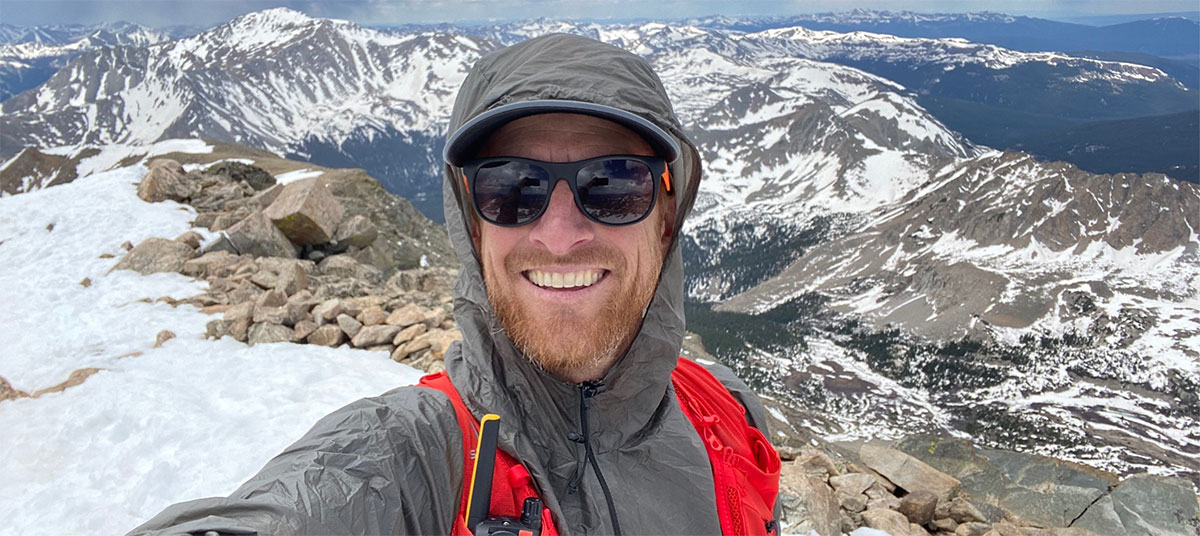
Not all visitors may want to view a park only from the ground. Brian Peterson, assistant professor and newest member of the Applied Park Science Lab, is using a National Park Service cooperative agreement to gather data on overflights at national parks stretching from coast to coast and in Alaska and Hawaii. The project includes monitoring the Great Smoky Mountains, Grand Canyon and Olympic national parks, three of the top 10 visited parks — on the ground — in 2020, according to the National Park Service.
Peterson is assisting the National Park Service Natural Sounds and Night Skies Division in assessing all flights using airspace — up to 30,000 feet above ground level — over national parks’ units, including the number, routes, altitudes and flight travel patterns above the parks. The data will help determine when and where these flights could be affecting park resources and visitors’ experiences on the ground. Peterson’s analysis covers all types of aircraft, including helicopters, small airplanes and jumbo jetliners.
“Consideration of low-level overflights is important for the National Park Service to fulfill its mission of providing public enjoyment while preserving cultural and natural resources,” Peterson said. “But these flights pose risks as they can degrade the acoustic environment of a park. Too many flights overhead may spoil the experience for visitors in the park and affect the park’s wildlife and more.”
For his project, Peterson uses Automatic Dependent Surveillance-Broadcast, or ADS-B, technology to track the overflights. ADS-B uses a radio signal broadcasted from aircraft for monitoring purposes. It has higher precision and broader coverage than radar technology and is more effective in remote areas that lack radar coverage, such as in Alaska.
The lab is designing a multi-module custom GIS toolbox that processes, analyzes and creates visualizations of the overflights from the ADS-B data.
“This is the first time the National Park Service has funded a lab to analyze ADS-B data,” Peterson said.
At work across US
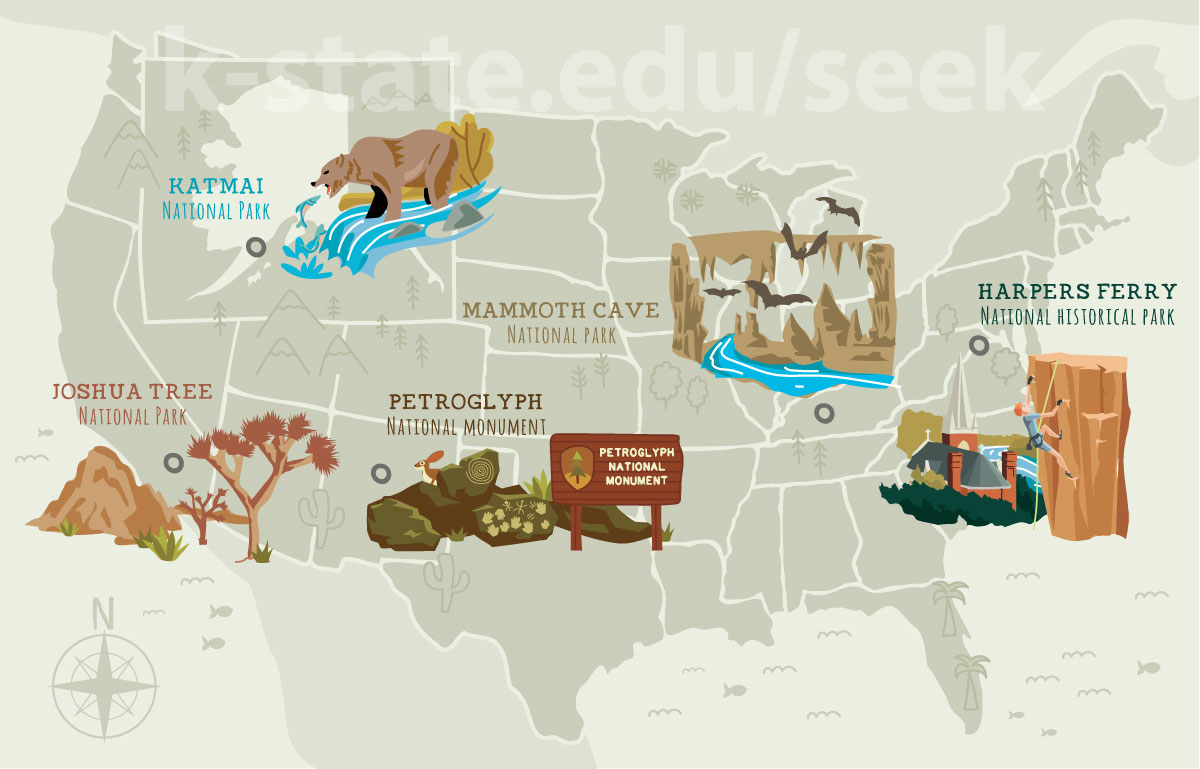
The Applied Park Science Lab works on projects across the U.S.
While many Applied Park Science Lab projects share similarities and research methods, Sharp said every project is different. That is evident in the other projects currently being conducted by the lab:
- Understanding how rock climbers would like to use Harpers Ferry National Historical Park in West Virginia and Maryland, and providing data to park management to develop a climbing management plan. Recent closures because of resource and wildlife concerns have led to conflicts between rock climbers and management. Funded by the National Park Service, the project is in collaboration with Old Dominion University
- Studying how terrestrial and aquatic trails are used in Mammoth Cave National Park in Kentucky, the longest-known cave system in the world. This study will help develop indicators and thresholds for long-term monitoring. The National Park Service is funding the project, which is in collaboration with Clemson University.
- Conducting visitor surveys at Joshua Tree National Park in California. The number of visitors to the park increased from 1.4 million in 2010 to 2.9 million in 2019, raising concerns about resource and experience protection. The lab uses cellphone data to understand how visitors move around the park, specifically in backcountry areas. The National Park Service funds the project and the work in collaboration with Clemson University.
- Developing a visitor use monitoring plan for Petroglyph National Monument in Albuquerque, New Mexico. The plan will help the park maintain its natural and cultural resources as well as the visitor experience.
Some Applied Park Science Lab projects study the experience of virtual visitors. A recently completed project studied if people watching brown bears live via a webcam at Katmai National Park in Alaska formed emotional connections with the bears. An ongoing project is looking at the health benefits of virtual live, interactive safaris in South Africa.
“The good thing about what we do at the Applied Park Science Lab is that there is so much variety,” Sharp said. “Sometimes it’s brown bears and sometimes it’s historic parks. Sometimes it’s horseback riding, hiking, mountain biking, car tours, whatever.”